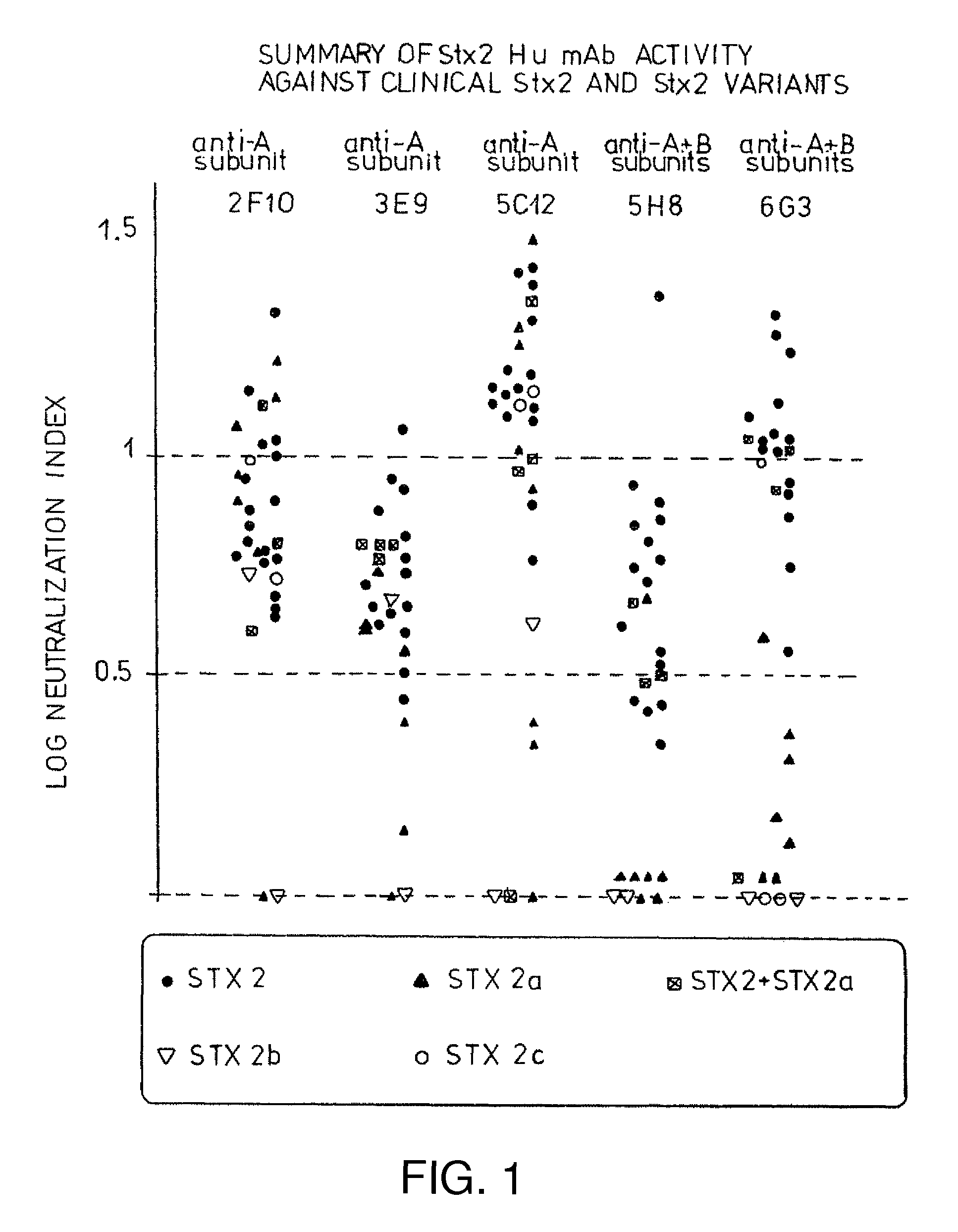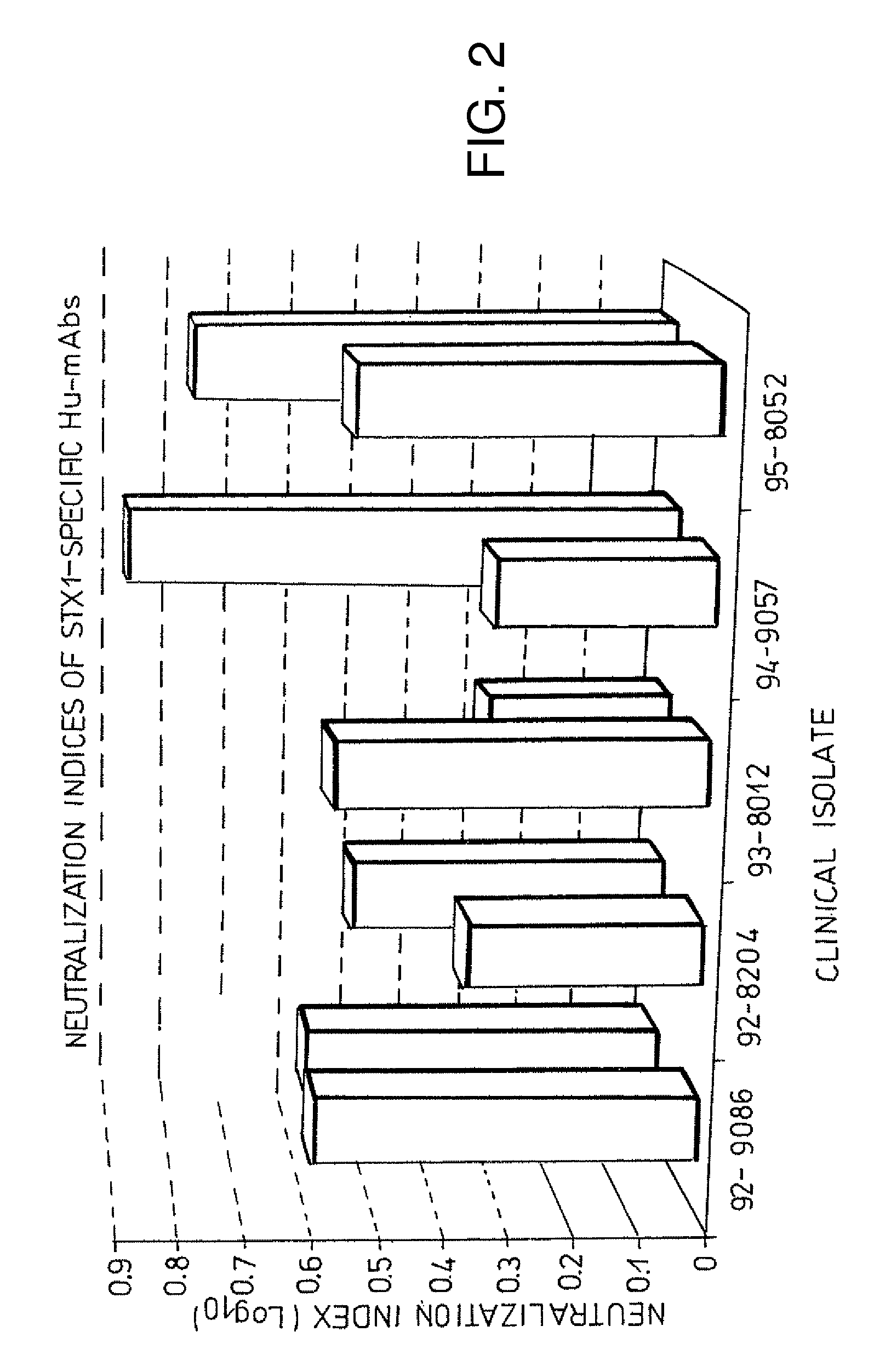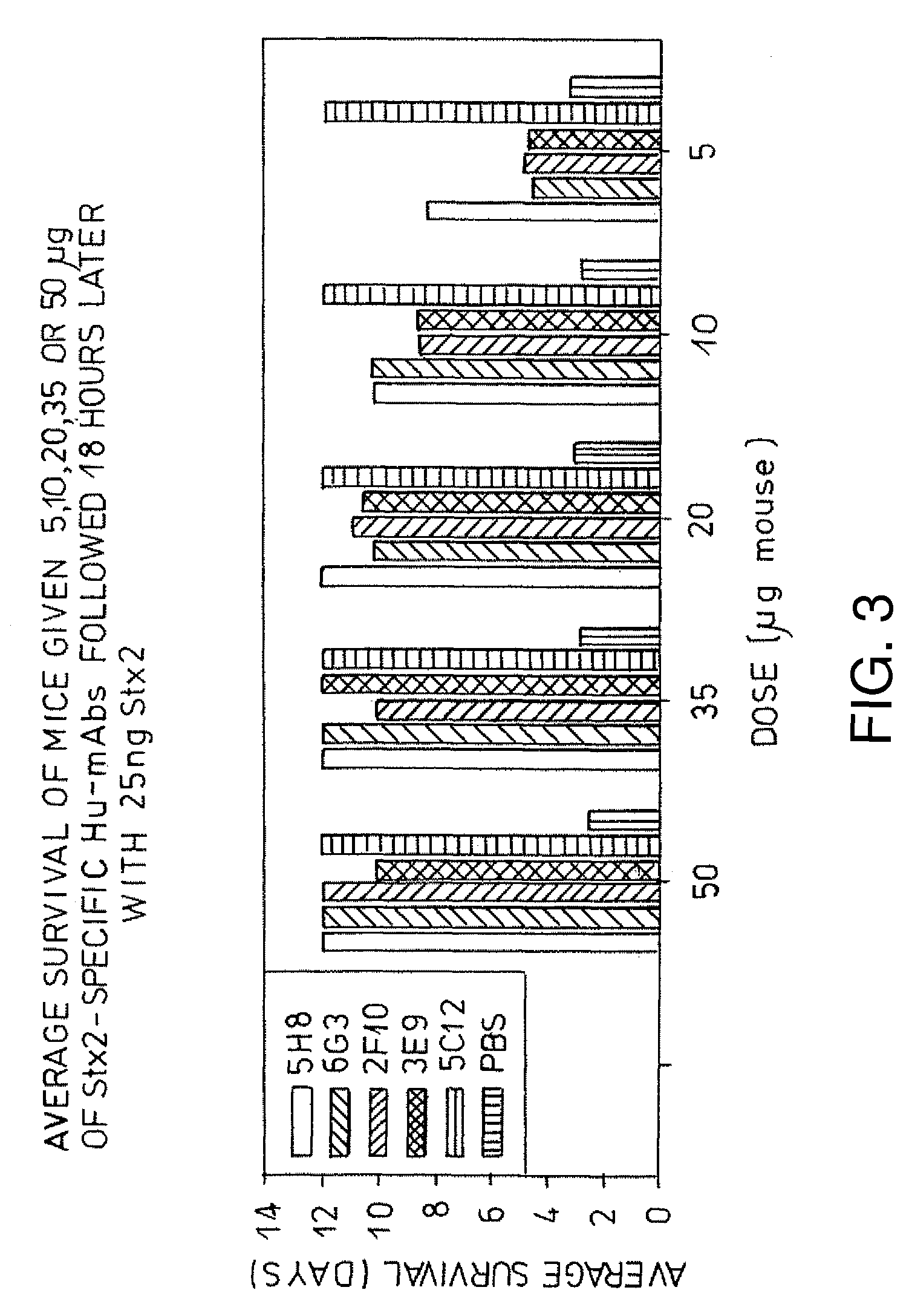Human neutralizing antibodies against hemolytic uremic syndrome
a technology of hemolytic uremic syndrome and neutralizing antibodies, which is applied in the field of dose forms, can solve the problems of difficult development of effective treatments, permanent kidney damage, and adult susceptibleness, and achieve the effect of few adverse side effects
- Summary
- Abstract
- Description
- Claims
- Application Information
AI Technical Summary
Benefits of technology
Problems solved by technology
Method used
Image
Examples
example 1
Development of a Gnotobiotic Piglet Model of Enterohemorrhagic Escherichia coli Infection
[0041]Materials and Methods:
[0042]Toxin Purification and Toxoid Production
[0043]Hydatid cysts isolated from sheep infected with Echinococcus granulosus contain material, identified as a glycoprotein, which has P1 blood group reactivity. The P1 glycoprotein's antigenic determinant was subsequently shown to consist of a trisaccharide, Galα-4Galβ1-4G1cNAc, identical to the nonreducing end of the P1 glycolipid on human erythrocytes. Shiga toxin, SLT-I and -II bind to terminal Galα-4Gal disaccharide of glycolipids and hence, the P1-glycolipid is a receptor for these toxins. The P1 glycoprotein in hydatid cyst fluid interacts directly with Shiga toxin and inhibits Shiga toxin binding and cytotoxicity to tissue culture cells. By covalently coupling the hydatid cyst glycoprotein to Sepharose 4B, a solid phase system for capturing toxin is generated. To purify SLT-I, C600(933J) is grown in low syncase me...
example 2
Construction of Monoclonal Antibodies by Creation of a Phage Display Library
[0059]Anti SLT-I and SLT-IT antibodies were generated by phage surface display technology as follows: In this approach, a library of heavy (VH-CH1) and Light (VL-CL) chain genes were generated in vitro. This library was cloned into an M13 surface display vector (pComb3 or its equivalent) and the resulting M13 phages, displaying anti SLT I and SLT II antibodies on their surface, were screened and selected by bio-panning.
[0060]Materials and Methods:
[0061]Enrichment of Lymphocytes Secreting Anti SLT I and Anti SLT II Antibodies
[0062]Lymphocytes secreting anti SLT-I and anti SLT-II antibodies are enriched according to Linton, et al. (Linton, et al., Cell, 59:1049-1059 (1989)). Purified lymphocytes are incubated for 45 minutes with 60 nM biotin-SLT-I or biotin-SLT-II toxin, washed twice, and then poured onto Petri dishes coated with streptavidin and blocked with bovine serum albumin, incubated for another 60 minu...
example 3
Preparation of Specific Human Monoclonal Antibodies Against Shiga-like Toxin II Using a Transgenic Mouse and Neutralization of this Toxin Using the Monoclonal Antibodies
[0074]Materials and Methods:
[0075]Isolation of Stx2
[0076]Stx2 was isolated, purified, and quantified as described in Donohue-Rolfe, et al., Infect. Immun., 57(12):3888-93 (1989). Briefly, Stx2 was isolated from E. coli strain C600 (933W) which bears the 933WJ bacteriophage that encodes Stx2. E. coli strain C600 (933W) was grown in Modified Syncase Broth at 37° C. with agitation in the presence of 200 ng / ml mitomycin C. Mitomycin C induces the 933J bacteriophage carrying the genes for Stx2. Stx2 in the culture supernatant was precipitated by the addition of 70% ammonium sulfate. The precipitate was dissolved in 10 mM Tris (pH 7.4) and dialyzed against the same buffer. The dialyzed and dissolved precipitate was applied to a Sepharose 4B affinity column containing P1 glycoprotein isolated from Echinococcus granuloses hy...
PUM
| Property | Measurement | Unit |
|---|---|---|
| concentration | aaaaa | aaaaa |
| dissociation constant | aaaaa | aaaaa |
| weight | aaaaa | aaaaa |
Abstract
Description
Claims
Application Information
 Login to View More
Login to View More - R&D
- Intellectual Property
- Life Sciences
- Materials
- Tech Scout
- Unparalleled Data Quality
- Higher Quality Content
- 60% Fewer Hallucinations
Browse by: Latest US Patents, China's latest patents, Technical Efficacy Thesaurus, Application Domain, Technology Topic, Popular Technical Reports.
© 2025 PatSnap. All rights reserved.Legal|Privacy policy|Modern Slavery Act Transparency Statement|Sitemap|About US| Contact US: help@patsnap.com



